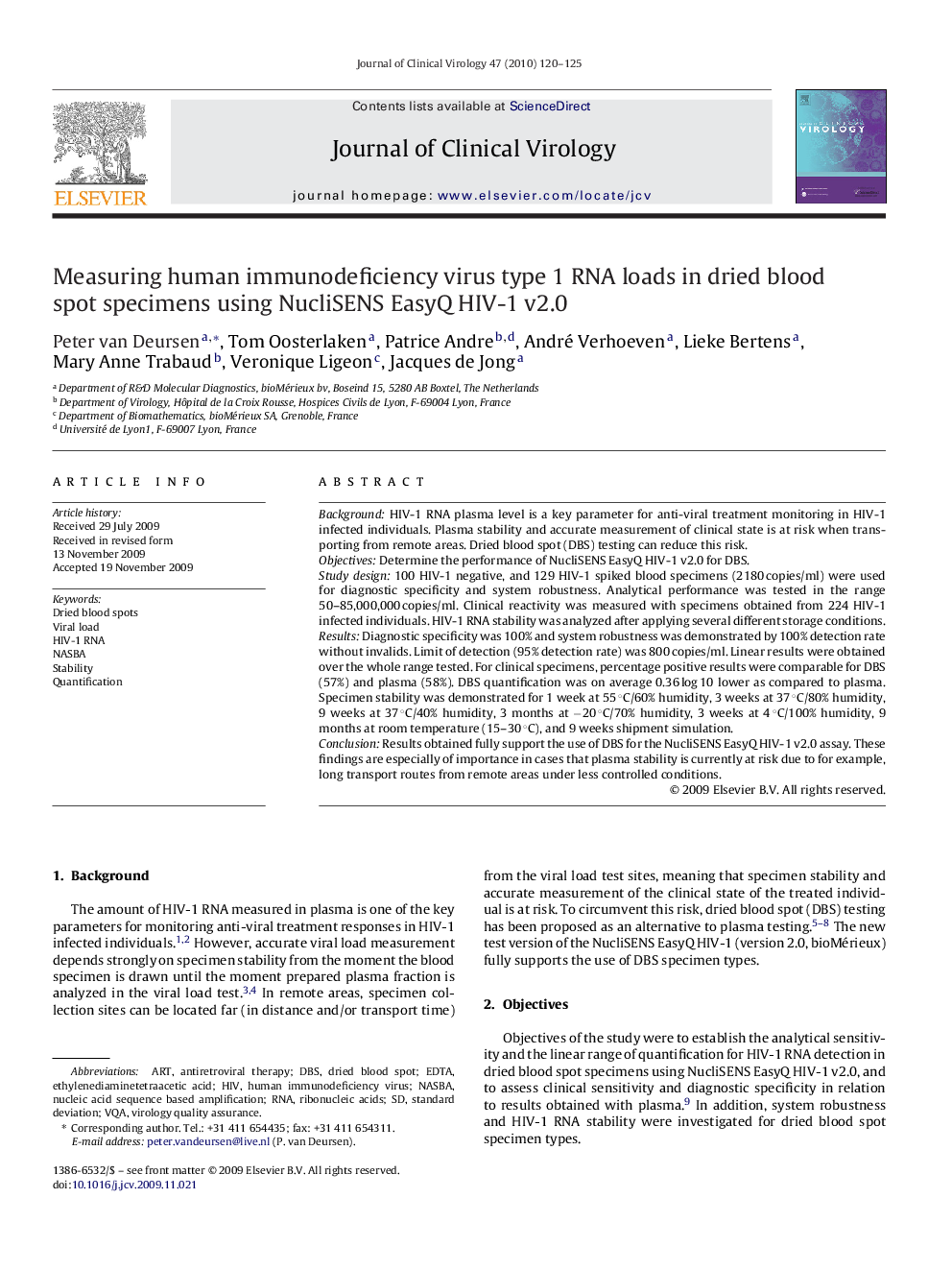| Article ID | Journal | Published Year | Pages | File Type |
|---|---|---|---|---|
| 3369929 | Journal of Clinical Virology | 2010 | 6 Pages |
BackgroundHIV-1 RNA plasma level is a key parameter for anti-viral treatment monitoring in HIV-1 infected individuals. Plasma stability and accurate measurement of clinical state is at risk when transporting from remote areas. Dried blood spot (DBS) testing can reduce this risk.ObjectivesDetermine the performance of NucliSENS EasyQ HIV-1 v2.0 for DBS.Study design100 HIV-1 negative, and 129 HIV-1 spiked blood specimens (2180 copies/ml) were used for diagnostic specificity and system robustness. Analytical performance was tested in the range 50–85,000,000 copies/ml. Clinical reactivity was measured with specimens obtained from 224 HIV-1 infected individuals. HIV-1 RNA stability was analyzed after applying several different storage conditions.ResultsDiagnostic specificity was 100% and system robustness was demonstrated by 100% detection rate without invalids. Limit of detection (95% detection rate) was 800 copies/ml. Linear results were obtained over the whole range tested. For clinical specimens, percentage positive results were comparable for DBS (57%) and plasma (58%). DBS quantification was on average 0.36 log 10 lower as compared to plasma. Specimen stability was demonstrated for 1 week at 55 °C/60% humidity, 3 weeks at 37 °C/80% humidity, 9 weeks at 37 °C/40% humidity, 3 months at −20 °C/70% humidity, 3 weeks at 4 °C/100% humidity, 9 months at room temperature (15–30 °C), and 9 weeks shipment simulation.ConclusionResults obtained fully support the use of DBS for the NucliSENS EasyQ HIV-1 v2.0 assay. These findings are especially of importance in cases that plasma stability is currently at risk due to for example, long transport routes from remote areas under less controlled conditions.
